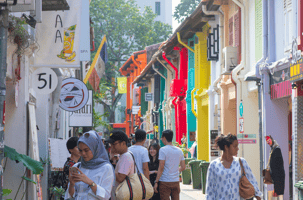It's quickly becoming common knowledge that cultural diversity is good for business. Comprising eleven different countries, five different time zones, and populated by approximately 650 million people, it cannot be understated just how diverse Southeast Asia is as a region in terms of ethnicity, language, religion, etc. This diversity can be attributed to Southeast Asia’s geostrategic location as a historical trading spot even prior to Western colonisation. In fact, Farish A. Noor in a 2019 journal article published by the ISEAS-Yusof Ishak Institute wrote that Southeast Asia is ‘A region that comprises both a mainland and an archipelago that straddles the distance of Europe, and one that has always been at the crossroads of Asia. As such, it is not surprising that Southeast Asia bears the historical-cultural imprint of centuries of human contact, trade, settlement and migration from all corners of Asia.’
Of the approximately 650 million people in Southeast Asia, approximately one hundred different ethnicities exist. The largest ethnic group in Southeast Asia - the Javanese - is also the largest ethnic group in Indonesia, making up 40.1% of the Indonesian population (according to the CIA World Factbook) or approximately 100 million people. The second largest ethnic group - the Kinh or Viet - on the other hand, accounts for approximately 80 million people in Vietnam and surrounding countries. However, some governments such as the Lao and Vietnamese Governments are known to recognize fifty or more ethnic groups within its borders.
In regards to religion, the five most popular religions in Southeast Asia are Islam, Buddhism, Christianity, Hinduism, and Confucianism. Though the region is religiously diverse, the countries that constitute Southeast Asia vary in terms of religious diversity. According to the Pew Religious Diversity Index, Singapore (scoring 9) and Vietnam (scoring 7.7) are among the world’s most religiously diverse countries in that neither country is dominated by any single religion, contrasting certain countries wherein a single religion is dominant (e.g. Timor-Leste and Roman Catholicism, Cambodia and Buddhism).
Moreover, the same study states that incorporating a more diverse workforce not only helps companies in the short-term but can also be beneficial in the long-term, ensuring companies access to a wider pool of potential employees. In addition to a wider pool of potential employees, companies may also gain access to a wider pool of potential clients as a workforce composed of different cultural backgrounds may be able to attract a whole new set of different national or even international clientele through common languages, experiences, etc.
Therefore, the undoubtably diverse cultures of Southeast Asia can facilitate more creative means of problem solving for companies considering relocating to the region. In addition to the benefits associated with creative problem solving, Southeast Asian countries’ recent focus on expanding international trade and industrial diversification through initiatives such as Thailand’s Easter Economic Corridor, companies can potentially access an even wider pool of potential employees and customers than that which is afforded by simply having a diverse workforce.
-1.jpg?width=146&height=50&name=Kusu%20(1)-1.jpg)



